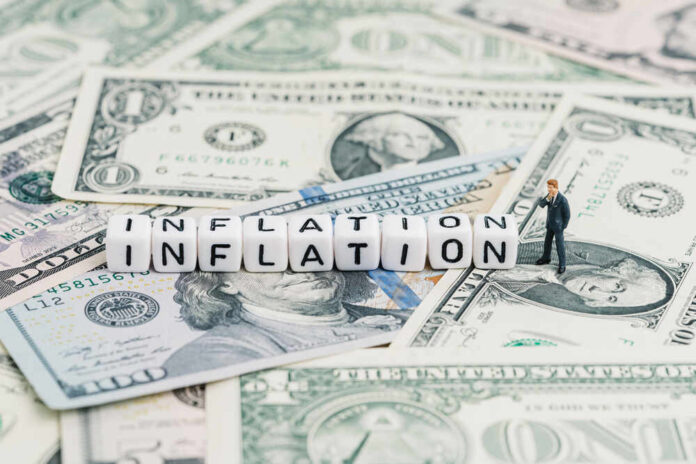
The specter of inflation, which has haunted consumers for months, seems not to be letting go. Consumer prices rose 3.2% in July from a year earlier, despite the Federal Reserve’s record series of rate hikes. As costs continue to pinch wallets and challenge household budgets, this data underpins concerns surrounding the Biden administration’s handling of the economy.
To put this in context, this is the first increase in the annual rate of inflation since June 2022. While it’s a relief to note that inflation had moderated from its alarming 9.1% peak in June 2022 — a time when consumers faced gas prices at an average of $5 per gallon, food prices surging by 10.4%, and new car prices rising by 11.4% — the continuing upward trend is disconcerting.
Don't believe the financial media's spin that July's 3.2% YoY #CPI rise, with YoY core at 4.7%, means the #Fed is winning its war against #inflation. Core is bottoming, and the headline number is about to rise sharply led higher by surging #oil prices. The Fed has already lost.
— Peter Schiff (@PeterSchiff) August 10, 2023
Core prices, which typically exclude the highly volatile sectors of food and energy, rose by 0.2% on a month-to-month basis in July, settling at an annual increase of 4.7%. These numbers, though in line with some economists’ predictions, are far from the Federal Reserve’s target inflation rate of 2%.
One can’t help but harken back to 2021 when the Biden administration, promising to rectify the so-called economic “mismanagement” of the Trump era, embarked on aggressive stimulus spending. Alongside the Fed’s decision to maintain near-zero rates when the economy was already on a recovery trajectory, these measures inadvertently sowed the seeds of the inflationary pressures Americans are grappling with today.
A rambling, incoherent response full of "ums" and "you knows" to a simple fundamental question.
Public expectations drive inflation???? https://t.co/YosjW2UYhg
— Jeff Deist (@jeffdeist) August 10, 2023
Interestingly, as inflationary pressures mounted, the Biden administration and the Federal Reserve officials assured the public that these price increases were only temporary. As we now know, this “transitory” narrative was, at best, a miscalculation.
Recent data paints a mixed picture. On the one hand, there’s some relief for consumers as prices of used cars and trucks fell by 1.3% in July. On the other hand, persistent inflation is evident in areas like shelter costs, which account for a significant chunk — about 40% — of the core inflation increase. These costs rose by 0.4% in July and have increased by 7.7% over the past year. Energy prices, too, showed a slight increase, with gasoline costs ticking up by 0.2%.
When it comes to everyday essentials, food prices are a crucial concern. Grocery costs in July rose by 0.3% and are 3.6% higher compared to the same time last year. Items like rice, bread, ground beef and cookies witnessed price hikes, while others like chicken, fish and eggs experienced declines.
Amid these trends, a pivotal question arises: Is the Federal Reserve equipped to steer the economy toward stable inflation rates? Over the past 18 months, the Fed increased its benchmark interest rate from almost zero to a range of 5.25 to 5.5%. While some investors and analysts believe that the rate-hiking cycle might pause, allowing rates to remain stable until mid-next year, others opine that further rate hikes might be on the horizon to keep inflation in check.
While inflation has receded from its peak, its persistence serves as a sobering reminder of the country’s economic challenges. As American households struggle with rising costs and policymakers deliberate on the next steps, one thing remains clear: the road to financial stability and price normalization is still a work in progress.

















